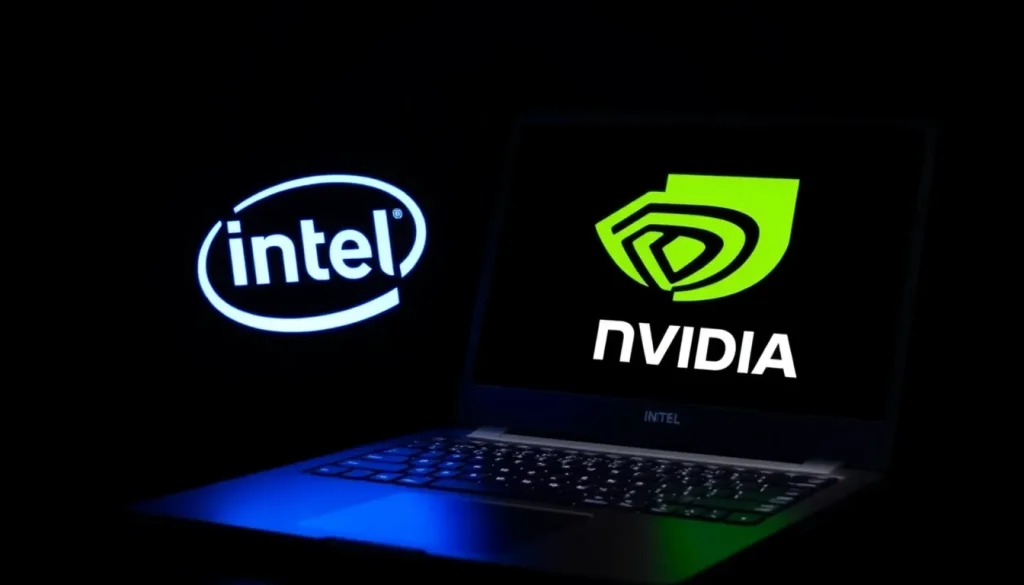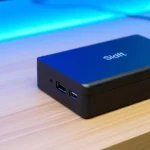Intel and Nvidia partnership may transform the future of laptops

In an unprecedented move that could redefine the landscape of computing, Intel has entered into a strategic partnership with Nvidia, aiming to revolutionize the performance capabilities of laptops. This collaboration promises to merge cutting-edge graphics technology with advanced processing power, heralding a new era for mobile computing.
This alliance, involving a substantial investment of $5 billion from Nvidia, is set to create a new class of laptop chips that integrate Intel’s CPUs with Nvidia’s RTX GPUs. The implications of this deal extend beyond mere hardware enhancements; they signal a shift in the dynamics of the tech industry, with potential impacts on gaming, creative work, and everyday computing.
Impact of the Nvidia-Intel Partnership on the Laptop Market
The joint design of custom PC processors featuring RTX GPUs allows Nvidia to penetrate a significant portion of the laptop market, while Intel capitalizes on the financial backing and technological expertise of Nvidia. This strategic alliance is expected to yield:
- Enhanced Performance: The integration of Nvidia RTX GPUs with Intel’s CPUs aims to deliver superior processing speed and graphics rendering capabilities, catering to gamers and creatives alike.
- Broader Market Reach: By combining their strengths, both companies can target various segments, including gaming, education, and professional markets.
- Innovative Product Development: The collaboration is set to produce multiple generations of products that complement Intel’s existing roadmap.
According to Jensen Huang, Nvidia’s CEO, the partnership will create a unique integrated graphics laptop market that has never been seen before, targeting a previously underserved segment. This fusion of technologies not only enhances consumer choice but also invites competition in a space traditionally dominated by a few players.
The Technical Aspects of the New Joint Chips
At the core of this partnership is the development of x86 system-on-chips (SoCs) that will combine Intel’s processors with Nvidia’s RTX GPU chiplets. These new chips aim to provide:
- Seamless Integration: Utilizing NVLink technology, the combined architecture will enable efficient communication between the CPU and GPU.
- Modular Flexibility: Intel’s chiplet architecture allows for the integration of external GPU components, facilitating a customizable computing experience.
- Future-Proofing: The partnership is designed to keep pace with evolving market demands, ensuring that both companies remain competitive.
The design will leverage Intel’s chiplet architecture, which has proven advantageous for creating modular and scalable components. This structure allows for better performance tuning and resource allocation between the CPU and GPU, ideally leading to improved power efficiency and processing capabilities.
Historical Context: Lessons from the Past
This collaboration is reminiscent of the earlier Intel-AMD partnership that produced the Kaby Lake G chip, which attempted to merge an Intel CPU with an AMD GPU. Despite initial success, that venture ultimately fell short due to driver support issues and market competition. However, the Nvidia-Intel partnership seems positioned for success, buoyed by significant financial investment and technological synergy.
Intel and Nvidia have been in discussions about such a partnership since last year, indicating a strategic foresight into the changing dynamics of the tech industry. Michelle Johnston Holthaus, a former Intel executive, referred to this alliance as a “deal with the devil,” highlighting the risks and rewards involved.
Potential Challenges and Questions Surrounding the Deal
Despite the promising outlook, several questions linger about the Nvidia-Intel collaboration:
- Performance Metrics: What level of processing power can consumers expect from the integrated chips?
- External GPU Integration: Will there be proprietary connections for external GPUs, and how will they affect overall performance?
- Impact on Intel’s Own GPU Projects: What will happen to Intel’s standalone Arc GPUs, which are currently in the market?
Analysts have raised concerns about Nvidia’s commitment to the partnership and its plans for independent GPU developments. The integration of Nvidia’s technology into Intel’s existing products may lead to a reevaluation of Intel’s future in the GPU market.
Market Implications and Competitive Landscape
The Nvidia-Intel partnership poses significant challenges for competitors like AMD and Qualcomm, who must now navigate an increasingly consolidated market. With both companies holding substantial market shares—Intel with 80% of mobile CPUs and Nvidia with 94% of discrete GPUs—the competition is set to intensify.
As the market evolves, AMD and Qualcomm will need to innovate aggressively to maintain their relevance. AMD has expressed confidence in its roadmap, emphasizing its commitment to high-performance products. However, the combined forces of Intel and Nvidia could create a formidable barrier to entry for smaller players.
The Broader Tech Industry Context
The collaboration between Intel and Nvidia is not just a story about hardware; it reflects broader trends in the tech industry. As artificial intelligence and machine learning increasingly drive demand for advanced computing power, this partnership positions both companies to capitalize on future developments.
Intel CEO Lip-Bu Tan noted the importance of strengthening Intel’s balance sheet and leveraging strategic partnerships to navigate the evolving landscape. This deal could be a critical step in ensuring that Intel remains a vital player in the tech industry amidst rapid changes.
For further insights on this significant partnership, you can watch this video that elaborates on Nvidia's investment in Intel and its implications for the future of computing.
In conclusion, the Nvidia-Intel partnership marks a pivotal moment in laptop technology, showcasing how strategic alliances can drive innovation and reshape markets. As development progresses, the tech community will be eager to see how this collaboration unfolds and impacts consumer choices in the years to come.




Leave a Reply